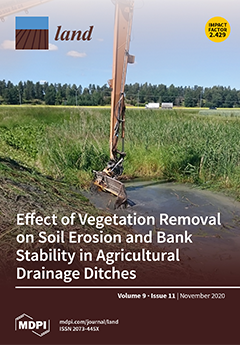Resource information
Rapid urbanisation in China has led to massive outmigration in rural regions, which has changed the regional labour force structure and can have various profound impacts as a result. This research used a case study in Southwest China to investigate how regional land use patterns have been changed in the context of rural outmigration and assessed the resulting dynamics on local ecological environment. The key findings include: (1) The local land conversion process was mainly characterised by the conversion of farmland (−18.3%) to residential area (+268.3%) and woodland (+55.6%) during 2000–2018; (2) about 83.7% of area showed a statistically significant increase in the normalised difference vegetation index (NDVI), which was not due to human interference factors (e.g., afforestation). Correlation analyses showed that depopulation (R = −0.514, p < 0.01) and local mild temperature (R = 0.505, p < 0.01) could be the main contributors. Only 2.5% of the area had decreased NDVI and this was directly caused by human activities (e.g., urban area expansion). These results implied that vegetation improvement can occur in the context of depopulation and farmland reduction, which did not significantly threaten the local agricultural sector. It then could be a good choice to allow those high-slope and biophysically poor farmlands to undergo forest succession rather than cultivation. Farmers in Southwest China should make a full use of the existing low-slope arable land to curb the declining trend of local farmland amount, in order to meet the future challenges brought by urbanisation. Enhanced agricultural infrastructure, mechanised farming and guide from local government can help achieve this goal. This study provided new insights and more realistic scenarios for rural development in Southwest China. The research findings are expected to provide a better understanding to enable sustainable land use management in Southwest China.


